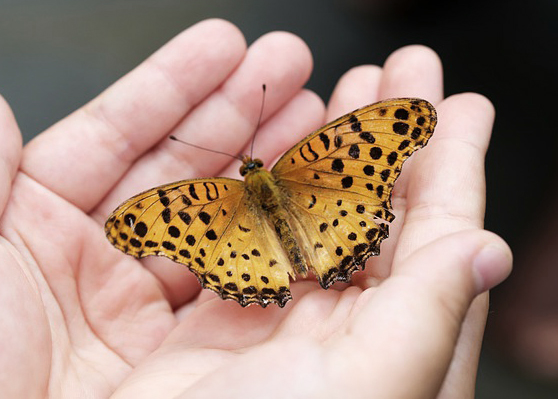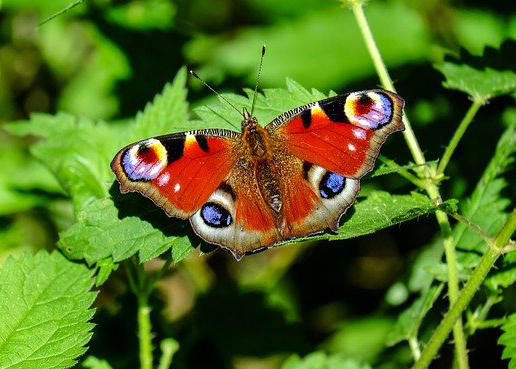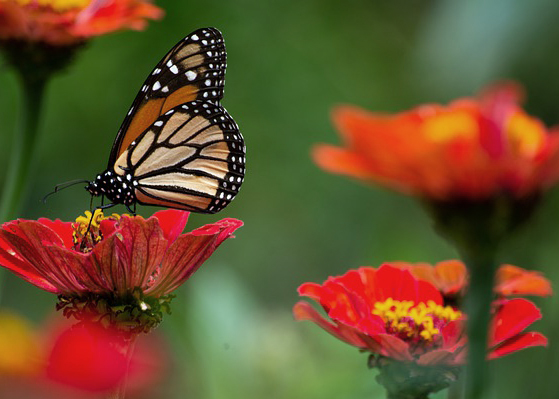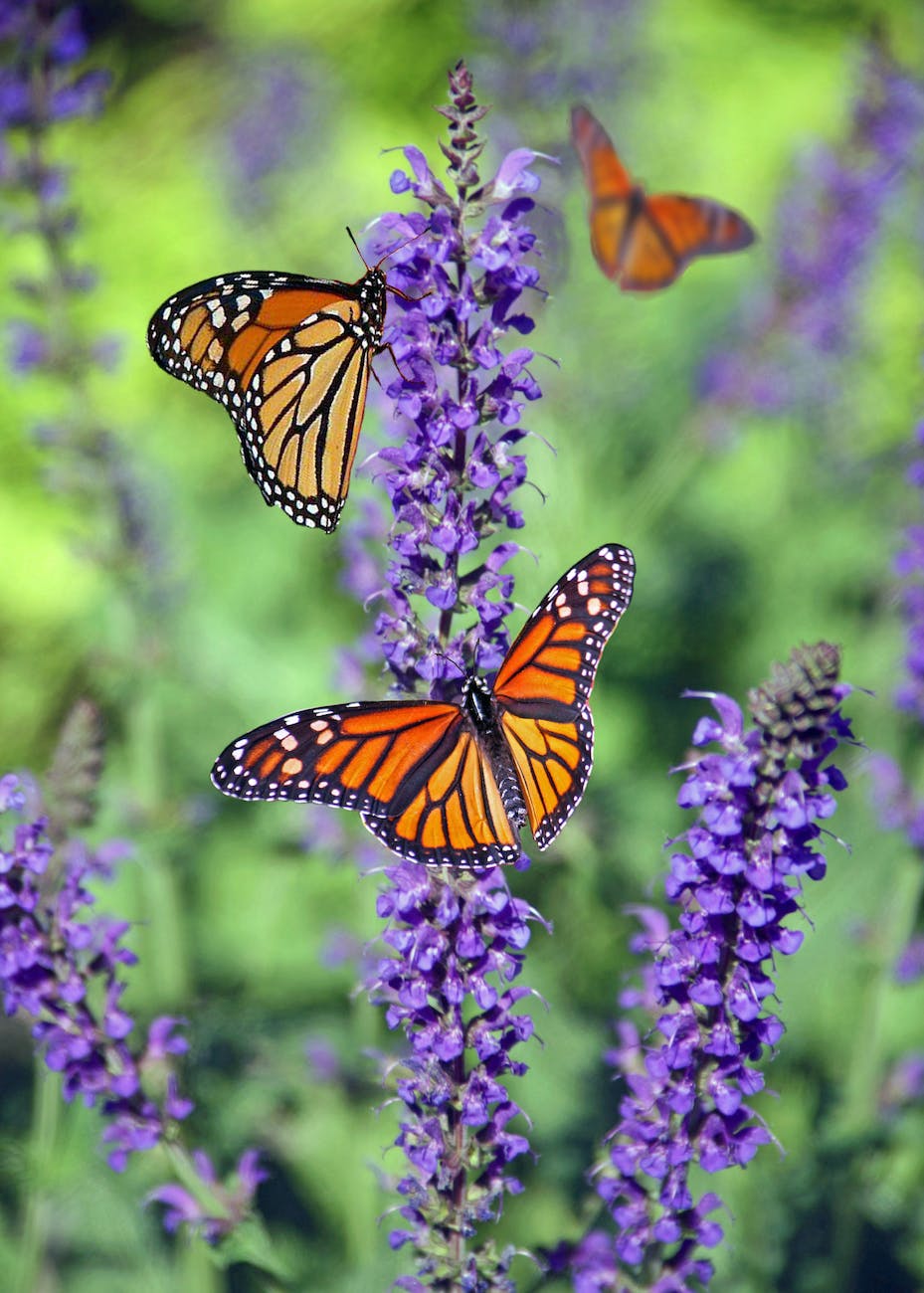“Butterflies are self propelled flowers.”
Robert A. Heinlein
Butterflies are certainly one of the most popular insects and for good reason. Their life cycle, appearance and variances in size and color are fascinating to say the least! They are an important bell weather indicator of how well our local ecosystems are performing as they are sensitive to change and loss of habitat. I find them to generally be a wonderful garden companion and an important insect to learn about. Cultivating a butterfly garden or planting butterfly friendly plants around our yards can be an incredibly rewarding hobby! Some species have been brought from the brink of extinction due to the hard work of only a few people. Our yard plant choices might not feel like it makes a difference, but they certainly do!

Gardening
By planting a butterfly garden with all of the right kinds of plants and flowers that butterflies love to feed on and lay eggs on, you will certainly have a yard full of butterflies throughout the growing season. Butterfly gardens can be any size – a window box, part of your landscaped yard, or even a wild untended area on your property.
Creating a butterfly garden should start with research to learn which kinds of butterflies are native to your area. You can find a great basic guide of butterflies by state online. Make a list of all of the different kinds of butterflies you would like to attract, and then learn which flowers and plants they both feed on and lay eggs on. All of the plants will certainly be native to your area and therefore easy to grow with the right conditions and care. Adult butterflies will naturally visit for a longer period as well as more frequently if they find plants to lay their eggs on as well as flowers to drink nectar from. These are called “host plants” and “nectar plants”.
You may also wish to add some adornments to your butterfly garden that will also help to attract butterflies, like a butterfly house or feeders. Butterfly houses have slots the ideal size for keeping birds out while giving butterflies protection from the wind and weather, and are beautiful garden decorations. However, many people have reported their lack of use and that they’re more a wishful thinking sort of garden piece. You could offer an additional nectar source or over ripe fruit such as oranges and bananas to supplement your flowers. Change the fruit daily and keep ants at bay by placing the fruit in the center of a dish with shallow water in it. By providing both the food and shelter butterflies need you can prolong the butterfly’s stay in your garden and draw in others.
Once you have done your research and know which kinds of plants you need, you should learn about the plants and flowers. What do they look like? How tall do they grow? What conditions do they thrive in? Perhaps print small pictures from the internet of each plant and flower so that you can begin to plan your butterfly garden by placing the pictures in the order in which you will want to plant them. In this way you can get a very good estimate of how much room you will need, and what your finished butterfly garden will look like. Check with a local greenhouse about getting these plants and flowers. Find out which ones are annuals and which are perennials.
You may want to plant the annuals in the front of the garden or away from garden fencing because they will need to be replaced each year. Perennials will come back year after year so these should be near the back of the butterfly garden and left alone to grow and thrive. The taller growing plants should also naturally be in the back as well. Most people like to start with a large butterfly weed in the back or corner and work around it with smaller plants and flowers. Different butterflies prefer different nectar plants, and some like more than one. Providing several different types of nectar plants in your butterfly garden that have varying blooming stages is the ideal way to attract butterflies throughout the season.
Be sure to have several types that bloom in the late summer and early fall because this is when butterflies are the most populous. If your local greenhouse cannot get you the plants you need, check in catalogs that sell bulbs or online and order them. Be sure to learn when and how to best plant them, especially if you must purchase bulbs and start the plants from scratch. Finally, this might go without saying but if you’re planning to have a butterfly garden, it’s important not to use insecticides around your yard especially at the same time butterflies may be visiting. Even using insecticide in the off season could kill the eggs on the underside of leaves. It’s probably best not to use it at all unless you have a major and harmful infestation.

“We are all butterflies. Earth is our chrysalis.”
LeeAnn Taylor
Life Cycle
All butterflies have “complete metamorphosis.” To grow into an adult they go through 4 stages: egg, larva, pupa and adult. Each stage has a different goal – for instance, caterpillars need to eat a lot, and adults need to reproduce. Depending on the type of butterfly, the life cycle of a butterfly may take anywhere from one month to a whole year. How long butterflies live depends on many things and varies greatly. It depends on the size of the butterfly, the species of the butterfly, where it lives, and what time of year it became an adult. For example, if the butterfly is of the smaller version it will probably not live as long, but if it is a larger butterfly, it will live longer.
The smallest butterflies that you can usually spot feasting on the flowers in your front yard will usually only live about one week. Now of course the size of the butterfly is not going to be the only factor of how long a butterfly will live, but does attribute to it. Now as many of you know, butterflies are cold-blooded creatures, so there is another factor to take into consideration when you are dealing with butterflies; the climate. For instance, if the butterfly egg has been laid just before the cold weather hits, the egg will stay in egg-form until the weather warms and as soon as it does, the caterpillar will hatch and everything will start again.
If the butterfly is an adult butterfly and the weather starts to turn colder and they did not migrate south, the butterfly will hibernate somewhere until the weather warms. What this means is that a butterfly could technically live for many months past the average life span, it all just depends on the climate and what stage of life the butterfly is in when winter comes.
There is also a difference between how long a butterfly would live if it was not living in the wild and how long it will actually live. The average life span is usually about one month. Mourning Cloaks, some tropical Heliconians, and monarchs are some of the only butterflies that have an average life span of about nine months. Butterflies in the wild are exposed to many predators like birds and other insects, so may not live as long as they are capable of.
Some common predators of the butterfly include but are not limited to: wasps, ants, parasitic flies, birds, snakes, toads, frogs, rats, lizards, dragonflies, spiders and even monkeys! To keep from becoming a tasty snack, some butterflies have developed a bad taste to their bodies. Monarchs taste bad because the caterpillars have eaten milkweed. Once a bird tastes one, they don’t want to try another one. Another butterfly, called the Viceroy, may have by design mimicked the Monarch and tastes good but looks so much like a Monarch that birds won’t eat it.
First stage – A butterfly starts life as a very small, round, oval or cylindrical egg. The coolest thing about butterfly eggs, especially monarch butterfly eggs, is that if you look close enough you can actually see the tiny caterpillar growing inside of it. Some butterfly eggs may be round, some oval and some may be ribbed while others may have other features. The egg shape depends on the type of butterfly that laid the egg. Butterfly eggs are usually laid on the leaves of plants, so if you are actively searching for these very tiny eggs, you will have to take some time and examine quite a few leaves in order to find some.
Second stage – When the egg finally hatches, butterfly larvae, typically called caterpillars emerge. Caterpillars do not stay in this stage for very long and mostly, in this stage all they do is eat. When the egg hatches, the caterpillar will start his work and eat the leaf they were born onto. This is really important because the mother butterfly needs to lay her eggs on the type of leaf the caterpillar will eat – each caterpillar type likes only certain types of leaves. Since they are tiny and can not travel to a new plant, the caterpillar needs to hatch on the kind of leaf it wants to eat. Caterpillars need to eat and eat so they can grow quickly. When a caterpillar is born, they are extremely small. When they start eating, they instantly start growing and expanding. Their exoskeleton (skin) does not stretch or grow, so they grow by “molting” and shedding the outgrown skin several times while it grows.
Third stage – The pupa stage is one of the coolest stages of a butterfly’s life. As soon as a caterpillar is done growing and they have reached their full length/weight, they form themselves into a pupa, also known as a chrysalis. From the outside of the pupa, it looks as if the caterpillar may just be resting, but the inside is where all of the action is. Inside of the pupa, the caterpillar is rapidly changing. Now, as most people know, caterpillars are short, stubby and have no wings at all. Within the chrysalis the old body parts of the caterpillar are undergoing a remarkable transformation, called metamorphosis to become the beautiful parts that make up the butterfly that will emerge. Tissue, limbs and organs of a caterpillar have all been changed by the time the pupa is finished, and is now ready for the final stage of a butterfly’s life cycle. There is a fascinating 3D video revealing the intricate process on National Geographic.
Fourth stage – Finally, when the caterpillar has done all of its forming and changing inside the pupa, if you are lucky, you will get to see an adult butterfly emerge. When the butterfly first emerges from the chrysalis, both of the wings are going to be soft and folded against its body. This is because the butterfly had to fit all its new parts inside of the pupa. As soon as the butterfly has rested after coming out of the chrysalis, it will pump blood into the wings in order to get them working and flapping – then they get to fly. Usually within a three or four-hour period, the butterfly will master flying and will search for a mate in order to reproduce. When in the fourth and final stage of their lives, adult butterflies are constantly on the look out to reproduce and when a female lays their eggs on some leaves, the butterfly life cycle will start all over. Watching the entire process on video is fascinating!

Behavior
Now that you know about the life cycle as well as the flowers/shrubs that will attract these beautiful creatures, there are a few things that you can observe about the butterfly while they are in their own natural habitat. For instance, did you know that butterflies are cold-blooded creatures? This is one of the main reasons why you will sometimes see a butterfly basking under the sun’s heat. Butterflies fly at their very best when the air temperatures range from seventy-five all the way to ninety degrees.
The reason for this is that they do not have to stop and warm their wings up. If the winds are cooler, you will often see many butterflies perched on flowers or leaves in the sun, usually laying them flat down and facing upward at the sun so they can get the best exposure. This is not the only type of basking that butterflies do, there are a few more. The most common basking for the Satyrs (Satyridae) and the Sulphurs (Pieridae) is basking with their wings folded and facing the sun. This is usually because the underbelly of their wings is darker; therefore it absorbs more heat when the wings are folded. The final form of basking is known as reflectance and this is used when the butterfly want to reflect the sunlight to their body versus just their wings. Usually, the butterfly’s body is much darker than their wings, so it makes since for them to reflect the sunlight to their body versus their wings sometimes.
The three P’s in butterfly behavior are puddling, patrolling and perching. You have probably seen all three of these actions when you have observed your butterflies but you most likely had no idea what these beautiful creatures were doing. First and foremost, puddling is when quite a few butterflies congregate at the wet edge of sandy areas or mud puddles. Since flowers are butterflies main source of food, there is not a lot of nutrients in flower nectar. Puddling is when males (mostly) get together and feast on extra salts and other nutrient found in the water around sand. These nutrients are then passed through the male’s sperm when they mate and the female uses these same nutrients to reproduce.
The patrolling and perching activities all have to do with mating. Usually, the male butterflies will seek out the female butterflies. This act is called patrolling and while butterflies do not have sharp vision, when a male spots a female that he may want to mate with, he swoops down on the perched female. If the female is indeed of the males species, this is where the courting ritual comes into play. Now, not all of the butterfly species go through the patrolling ritual, the Mourning Cloak, Black Swallowtail and the Red Admiral are just three of the butterflies that ‘perch’ instead. Instead, they will perch themselves on tall plants right along a stream or a ridge. The males will wait for the females to come and as soon as these perched males spots one of the females, he will begin his courtship.

Did You Know?
The wings of a butterfly move in a figure 8 motion. The largest butterfly has a 12 inch wing span while the smallest has just a half an inch wingspan.
Butterflies can’t hear, but they can feel vibrations and they smell with their antennae. They breath through openings in their abdomen called spiracles. Butterflies taste with their feet and live on an all-liquid diet.
As soon as a butterfly emerges from its chrysalis it must assemble its mouthparts that actually came in two parts. It uses palpi located adjacent to the proboscis to work the two parts together. You will notice them testing their proboscis out when they first emerge by curling and uncurling it to make sure it works.
Butterflies are nearsighted (within 10-12 feet), but they can see and discriminate a lot of colors we see from good distances. They can also see a range of ultraviolet light invisible to the human eye and their eyes consist of a network of 6,000 lenses.
Butterflies are the second largest group of pollinators after bees.
Helpful source: thebutterflysite.com
Lovely read and photographs. Butterflies are one of my favourite things!
LikeLike